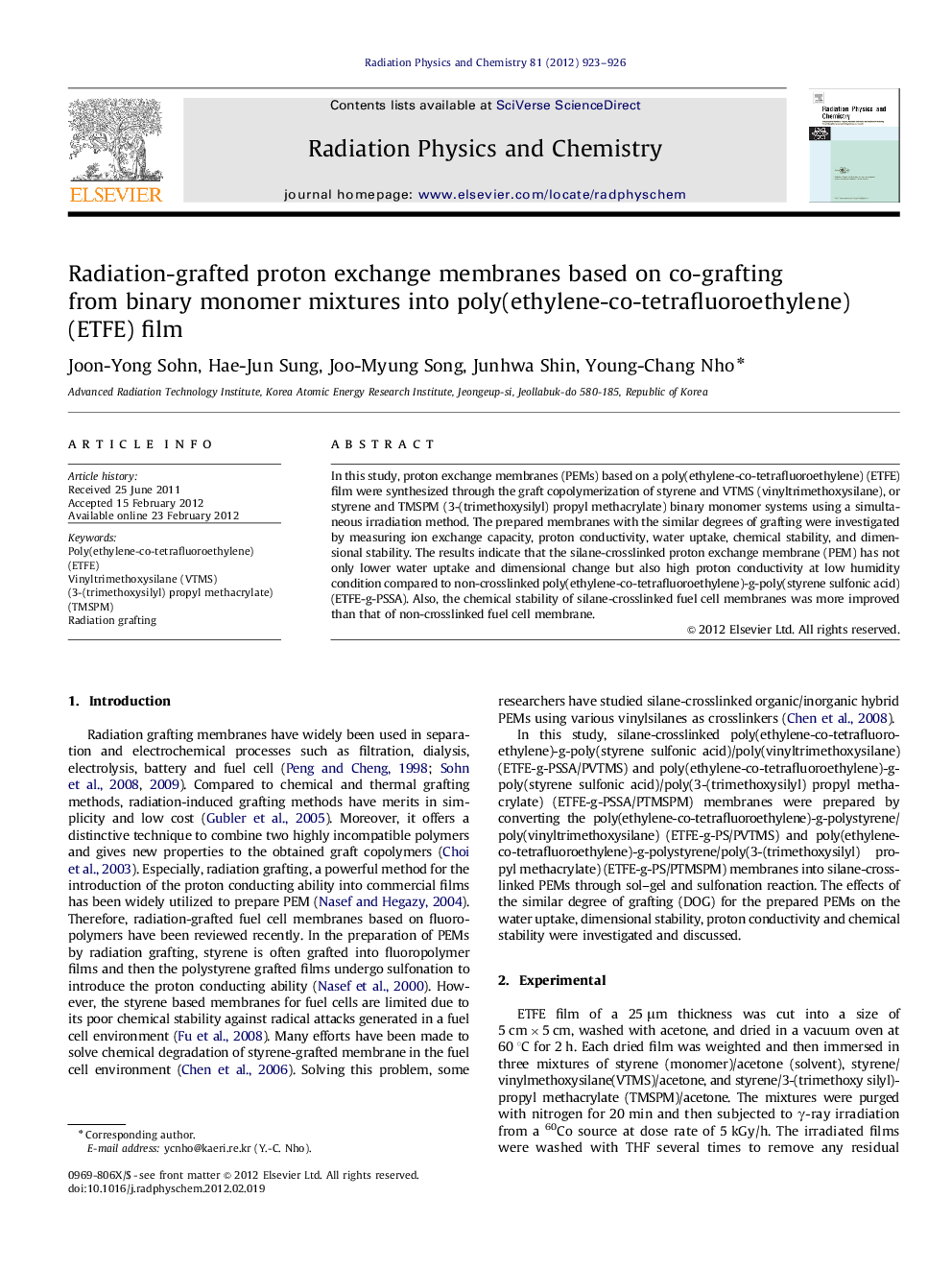| Article ID | Journal | Published Year | Pages | File Type |
|---|---|---|---|---|
| 1883927 | Radiation Physics and Chemistry | 2012 | 4 Pages |
In this study, proton exchange membranes (PEMs) based on a poly(ethylene-co-tetrafluoroethylene) (ETFE) film were synthesized through the graft copolymerization of styrene and VTMS (vinyltrimethoxysilane), or styrene and TMSPM (3-(trimethoxysilyl) propyl methacrylate) binary monomer systems using a simultaneous irradiation method. The prepared membranes with the similar degrees of grafting were investigated by measuring ion exchange capacity, proton conductivity, water uptake, chemical stability, and dimensional stability. The results indicate that the silane-crosslinked proton exchange membrane (PEM) has not only lower water uptake and dimensional change but also high proton conductivity at low humidity condition compared to non-crosslinked poly(ethylene-co-tetrafluoroethylene)-g-poly(styrene sulfonic acid) (ETFE-g-PSSA). Also, the chemical stability of silane-crosslinked fuel cell membranes was more improved than that of non-crosslinked fuel cell membrane.
► Preparation of the proton exchange membranes by radiation grafting. ► Co-grafting from binary monomer mixtures into polymer membrane by γ-ray irradiation. ► Silane-crosslinked proton exchange membranes by sol–gel reaction. ► Improvement of proton conductivity of silane-crosslinked proton exchange membranes in low humidity condition.
